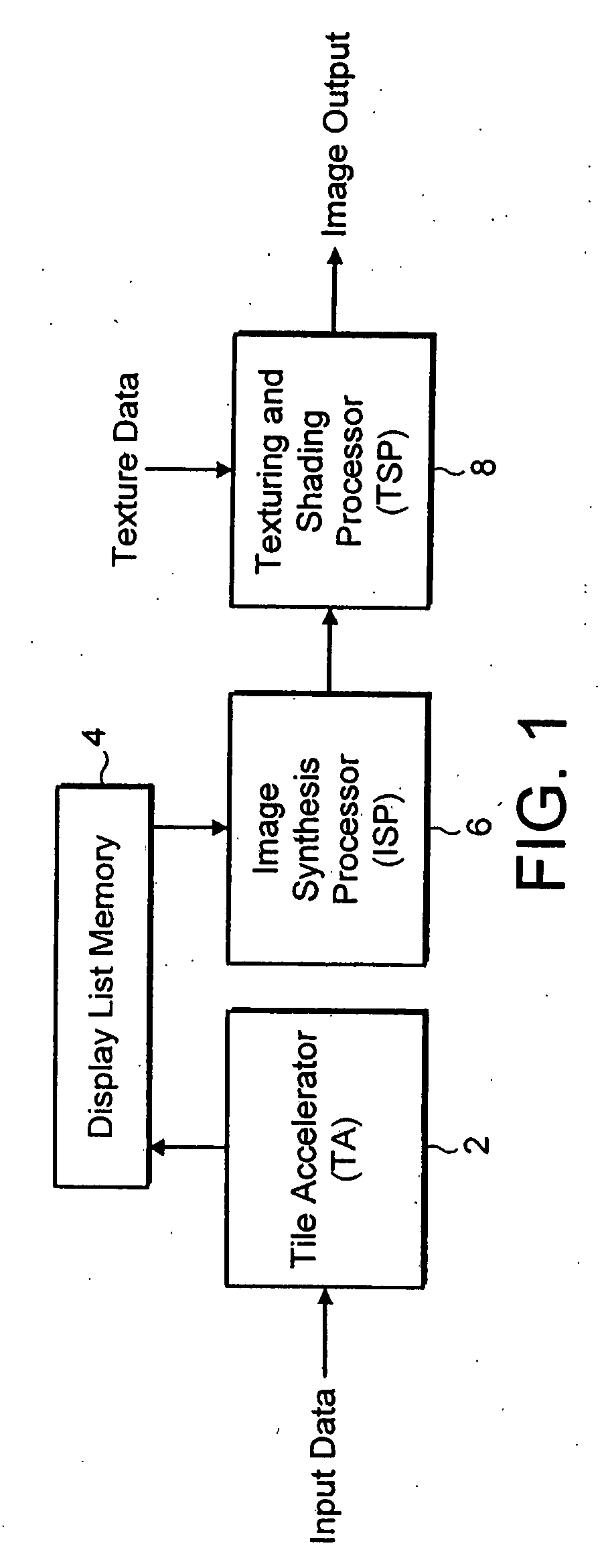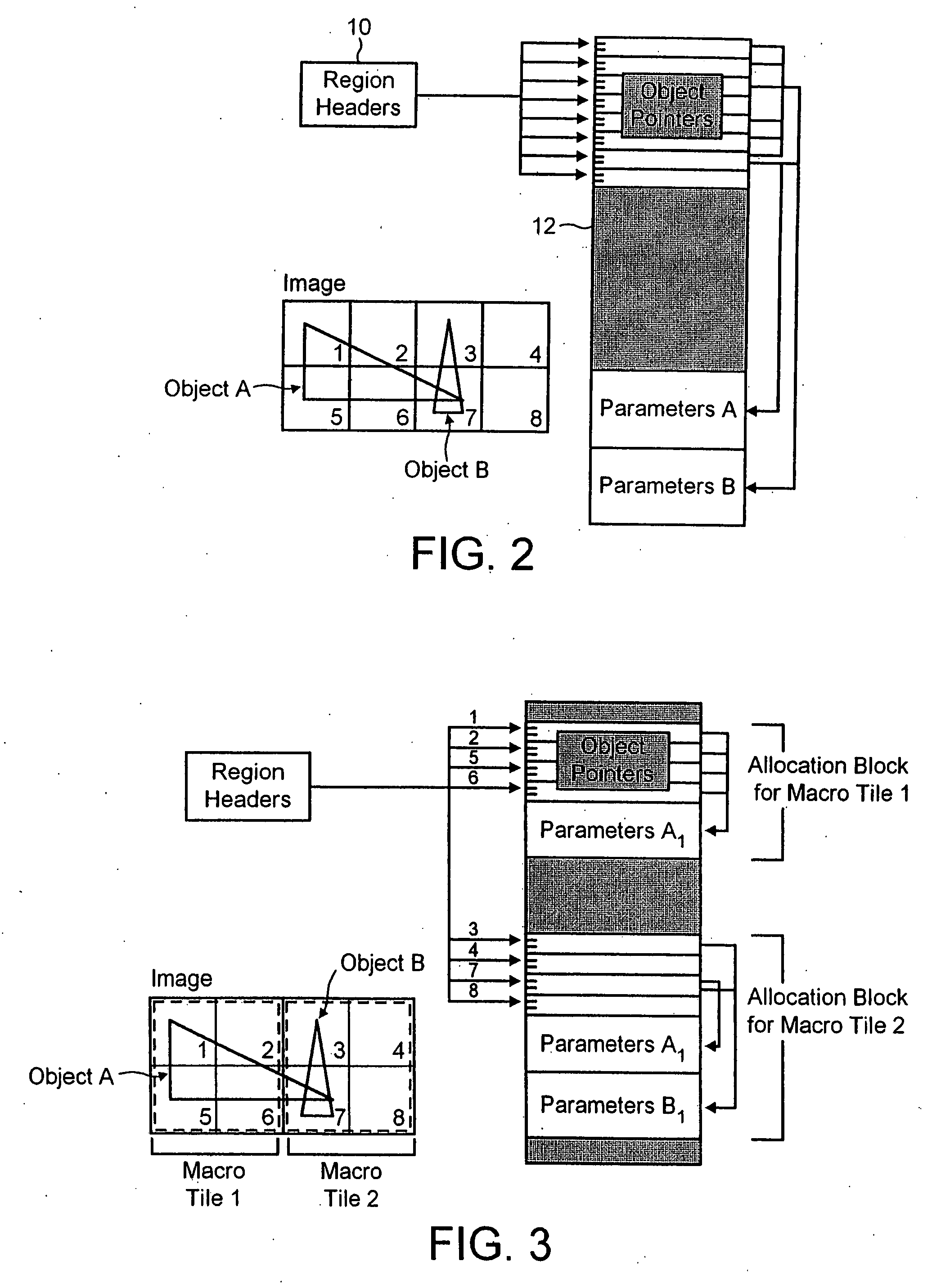Memory management for systems for generating 3-dimensional computer images
a technology of memory management and computer generated images, applied in the direction of memory adressing/allocation/relocation, image data processing, instruments, etc., can solve the problems of reducing the storage requirements of display lists, preventing considerable optimisation, and increasing the complexity of scenes which it is necessary to render using 3-d graphic systems. achieve the effect of reducing the memory bandwidth consumed
- Summary
- Abstract
- Description
- Claims
- Application Information
AI Technical Summary
Benefits of technology
Problems solved by technology
Method used
Image
Examples
Embodiment Construction
[0026] In the system of FIG. 1, polygons which are to be displayed are broken down into planar triangles. The data representing these is transformed by either hardware or software into a screen space representation and is then stored in local memory. The tiling process then performed by the tile accelerator 2 creates a list of pointers to the transformed triangle data for each tile in the scene. This is then stored in the display list along with parameters pertaining to the object of which the triangle is a portion. This is shown schematically in FIG. 2 in which the region headers 10 correspond to the identities of the tiles 1-8 shown in the Figure. As can be seen, the tiles cover two triangles named object A and object B. Object A is visible in tiles 1, 2, 5, 6 and 7 and object B is visible in tiles 3 and 7.
[0027] A display list 12 receives from the tile data for the objects visible in each tile and links are provided to the parameters associated with each object, namely parameter...
PUM
 Login to View More
Login to View More Abstract
Description
Claims
Application Information
 Login to View More
Login to View More - R&D
- Intellectual Property
- Life Sciences
- Materials
- Tech Scout
- Unparalleled Data Quality
- Higher Quality Content
- 60% Fewer Hallucinations
Browse by: Latest US Patents, China's latest patents, Technical Efficacy Thesaurus, Application Domain, Technology Topic, Popular Technical Reports.
© 2025 PatSnap. All rights reserved.Legal|Privacy policy|Modern Slavery Act Transparency Statement|Sitemap|About US| Contact US: help@patsnap.com



